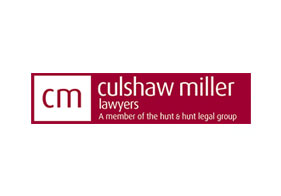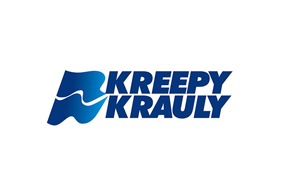You remember when it felt ridiculous to ask your phone a question? Now, on an afternoon, you find yourself effortlessly asking Siri for lunch recommendations.
It’s easy to forget, but voice search has gone from something that seemed a bit like a party trick to an everyday habit quicker than most of us appreciated. I’m not just referring to trends or buzzwords; if you’re a small, local business operating in Perth (or anywhere else in Australia), this is something you cannot ignore. It is fundamentally altering how the people who might become your customers discover you.
Here’s the thing, though. Most companies are still optimising their websites, as if it were 2015. They’re going after short, clunky keywords no one actually speaks out loud.
Their competitors, who have mastered voice search optimisation, silently capture the majority of “near me” searches.
What Makes Voice Search Different (And Why It Matters)
The way we might type a search term into Google could be something like “plumber Perth northern suburbs”. Short. Clinical. A bit robotic, really.
But what if that same person asks their smart speaker? They go, “Hey Google, who’s a good plumber near me that’s open right now?”
See the difference? Voice searches are also longer, more conversational and often asked as literal questions. They’re the way real people talk to each other at the pub or over coffee.
And this shift is significant, because Google’s getting scary good at natural language. The search engine is no longer interested only in matching keywords; it wants to answer our questions accurately.
And unless your site is in a format that answers the questions people are actually asking, you might as well be invisible to voice search users. Knowing what SEO does and how it benefits Perth businesses is step one in ensuring voice search works for you.
The Numbers Don’t Lie (Even If You Wish They Did)
Voice searches account for over 50% of mobile searches. Ninety-three per cent of Australians used a mobile phone to go online with it, the most commonly used device for access to the internet, according to research by the Australian Communications and Media Authority.
Teenagers aren’t the only ones, she added; busy parents looking for a dentist in between school runs, tradespeople searching for suppliers halfway through their jobs, and everyone else are also affected.
Local enterprises, in particular, must wake up to this. Most voice searches have local intent. When people search for services like “where can I get my car serviced” or “best Thai restaurant open now,” they are ready to make a quick decision. This decision is often made within an hour.
And if your business appears in those few voice search results, then awesome. If it doesn’t, your competitors have already won that customer over.
How Voice Search SEO Actually Works
Right, so how do you optimise for voice search without losing your mind in the process? While it’s not a complex process, it does necessitate some tangible effort.
Think Like Your Customer Talks
This is where most businesses go wrong. They’re cramming their content with search terms like “affordable landscaping services in Perth,” while people are actually asking, “What landscaper can I hire to do a small garden makeover?”
Write the questions that you receive from customers. Those questions? That’s your content goldmine. Your website needs to respond in the way that people ask – natural, conversational language that sounds like you are explaining something to a friend.
Focus on Long-Tail Keywords
Voice search SEO greatly benefits from these long, specific search phrases. Someone might ask, “Who’s the best family dentist in Subiaco who’s good with nervous kids?” That’s hyperspecific, and it converts into bookings.
Voice search local SEO is all about these longer, detailed queries that show real intent. By ranking for those queries, you attract customers who are ready to use your service rather than just browsing.
Make Google Business Profile Your Priority
If you haven’t optimised your Google Business profile properly, you’re fighting voice searches with one hand tied behind your back. When someone asks their phone to find a local business, Google pulls heavily from these profiles.
Make sure everything’s accurate and complete. Add decent photos. Get those reviews happening (genuine ones). Answer questions in the Q&A section. Treat your Google Business Profile like it’s your shopfront, because for voice search users, it is.
Structure Your Content for Featured Snippets
Here’s a tip to help you get on the right path to So here’s an insider secret that will set you moving in the direction of success with optimising for voice search. Featured snippets. That’s the kind of funky syntax voice assistants love to spit out, and if ever they pick up some of your content from page to ear, it’s a day you win the lottery.
You should structure your message so that it answers key questions in simple terms. Head with real questions. With your first paragraph, draw them in with the plain answer; peek below to read on. Lists are also beneficial, providing clear instructions, numbered tips, and bullet points.
Local SEO and Voice Search: A Match Made in Heaven
If you’re running a local business, optimising voice searches should be your new obsession.
When someone’s using voice search, they’re on the go looking for something nearby. “Coffee shop open now.” “Emergency plumber close by.” These searches have massive commercial intent – people want to make a decision fast.
Here’s what you need to perform right:
- Keep your NAP consistent: Name, address, and phone number must match everywhere. Inconsistencies confuse Google.
- Build local citations: Get listed on relevant directories and industry sites to prove your business operates in the area. Building local citations properly is one of the most effective ways to boost your voice search visibility.
- Target location-specific questions: Create content answering questions like “best coffee in Fremantle” or “reliable electrician Joondalup”.
- Use location pages properly: Service multiple areas? Create dedicated pages with genuinely useful content for each.
At Slinky, we’ve seen businesses that nail their local SEO suddenly start showing up in voice search results they never appeared in before. It’s just laying the groundwork properly.
Mobile Optimisation Is Non-Negotiable
Here’s some harsh news: if your website is ugly on mobile, then you’ve essentially wasted all the work you put into voice search optimisation.
The majority of voice searches are conducted on mobile phones. So when someone discovers your business in a voice search and clicks through to your site, it’s on their phone. If your website takes too long to load, if text is too hard to read, if buttons are impossible to click —they’re out of there. Straight to your competition’s site.
Page speed matters enormously. Google has been pretty straightforward on this. If your site is slower than a wet weekend, you’re not going to be doing well in the voice-search rankings (or any other kind of search ranking).
Ensure your website’s responsive, meaning it adjusts correctly depending on what screen size someone is using. This isn’t optional anymore.
The very own Australian Government Digital Service Standard mandates responsive design and mobile first for all digital services. It’s the baseline expectation.
The Role of Schema Markup (It’s Not as Scary as It Sounds)
Schema markup sounds technical and boring, but it actually helps with voice search SEO quite a lot.
It’s basically code that helps search engines understand what your content means, not just what it says. It functions similarly to adding labels, ensuring that Google understands exactly what it’s looking at.
For local businesses, these schema types matter most:
- LocalBusiness schema tells Google what you do and where you operate
- FAQ schema helps your Q&A content show up in relevant searches
- Review schema displays your star ratings in search results
- Opening hours schema lets voice assistants tell people when you’re open
The team at Slinky implements schema markup as part of our SEO services. It’s one of those behind-the-scenes things that actually moves the needle for voice search visibility.
Content That Actually Answers Things
Creating content solely for its own sake is pointless. We’ve all seen blog posts that waffle on without saying anything useful. It’s painful to read, and they’re not helping with voice search optimisation.
What works is content that genuinely answers customer questions. Not marketing fluff or keyword-stuffed nonsense. Real, helpful information.
Consider starting a comprehensive FAQ section if you haven’t already. Consider all the questions a potential customer might have before selecting your business, and ensure they are answered thoroughly.
Write blog posts that solve actual problems. Landscapers can explain how to fix garden drainage issues. Dental practices can cover what to do if you chip a tooth at the weekend. Using content strategically to improve your local SEO ranking makes a massive difference for voice search.
This content naturally attracts voice searches because people ask questions when they use voice search. They’re looking for answers, not keywords.
Why Working With Pros Makes Sense
You could attempt voice search optimisation on your own. But SEO is our life—you know, we have every algorithm update and trend change stitched into the lining of our jackets.
Slinky has assisted Perth businesses for more than 20 years. We know which trends matter. Voice search? That’s only getting bigger.
We deliver real results with our SEO services, which means new clients and more money coming in, not just fluff numbers. It’s local businesses we’re particularly interested in as far as voice search is concerned.
Peter Brittain works on your case from start to finish with no junior staff – just straight talking and clear-cut results.
What You Should Do Right Now
If you want to improve your voice search SEO, start today. Here’s what to prioritise:
- Audit your Google Business Profile: Complete every detail, add photos, and get reviews
- Check your content: Does it answer questions naturally or read like a corporate brochure?
- Test mobile: Open your site on your phone. Is it fast and functional?
- Use customer questions: List what people ask you, then create content that answers them
Feeling overwhelmed? Voice search optimisation is just one part of a bigger SEO puzzle. Sometimes the smartest move is getting professionals involved from the start.
The Bottom Line
Voice search is not the future. It’s here, and it’s changing how local businesses find customers online. The companies that pivot their SEO strategy now will clearly have an upper hand over those who don’t.
The good news? This is not some high-tech miracle that you have to be a technology whiz to set up. All you have to do is focus on producing helpful content that answers real questions, ensure your local SEO basics are in place, and keep your website functioning well for mobile.
At Slinky, we work with local businesses across Perth and further afield to get this stuff right. So if you’re ready to actually be visible when those people are using voice search to find the services you offer… I’d like us to have a conversation together.
Because really, voice search optimisation is not a matter of checking some fancy technical boxes at the end of a marathon to-do list. It’s all about making it easy for people to find you. And that is something every business should desire.



























